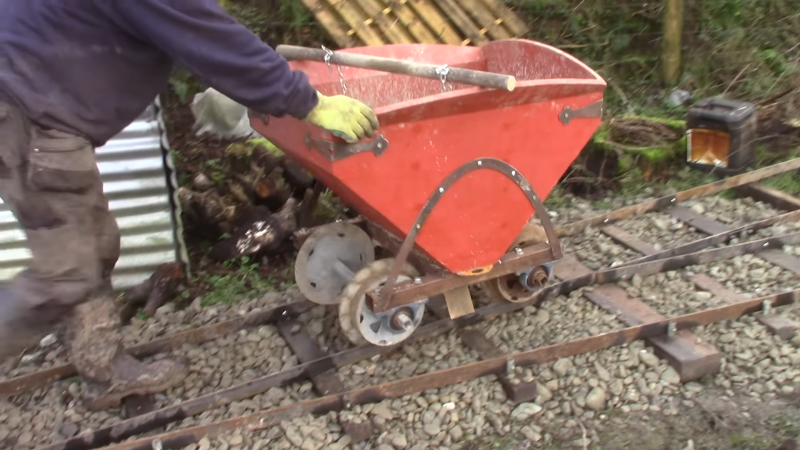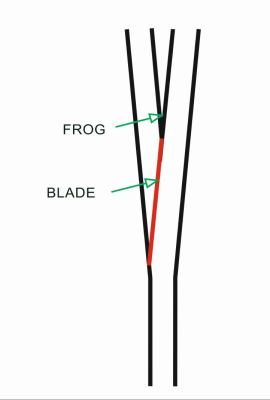
A home-built railway is one of the greatest things you could possibly use to shift loads around your farm. [Tim] and [Sandra] of YouTube channel [Way Out West] have just such a setup, but they needed some switching points to help direct carriages from one set of rails to another. Fabrication ensued!

The railway relies on very simple rails made with flat bar and angle iron, allowing the railway to be built without a lot of heavy blacksmithing work. For a light-duty home railway, these are more than strong enough to do the job.
As for the points, a simple V-shaped frog-and-blade design was used. The frog is the V-shaped section where the rails diverge into two directions, sitting in the center of the Y, while the blade is the part that moves to either side to guide the carriages in one way or t’other.
The blade consists of a 2.2 meter long piece of angle iron with a pin welded on, allowing it to pivot. Two pieces of flat bar were then welded together with a pin to make the frog. Two metal bushes were then forced into a wooden sleeper, allowing the blade to pivot as needed. The rails themselves are slightly kinked as needed and everything tacked down into sleepers with bolts and pipe pegs.
The design runs smoothly, much to [Tim]’s enjoyment. It’s a clear improvement over the earlier design we looked at least year.
There’s something inherently charming about a railway built with little more than wood, metal, and hammers. Seeing the little stone wagon run down the rails to bed in the sleepers is utterly joyful in a way that’s difficult to fully explain. Video after the break.
[Thanks to Foley for the tip!]
0 Commentaires